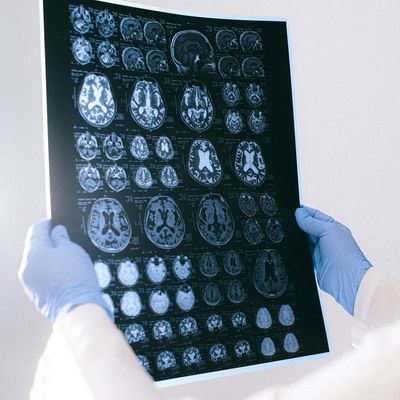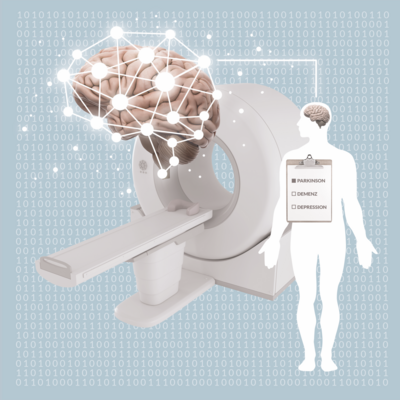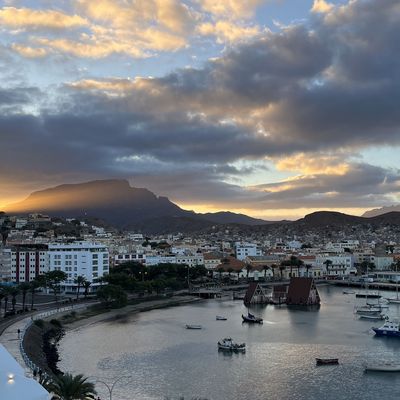Traveling through time in the arctic

Gregor Pfalz has the air of a young researcher who is burning to get to the bottom of things. Which fits perfectly, because his work as a doctoral candidate at the HEIBRiDS Data Science School in Berlin involves analyzing data from sediment collected from Arctic lakes, with the aim of making predictions about the climate of the future. And how does this work? It takes a lot of patience and a merging of two disciplines - geology and computer science.
A few things have already happened before Gregor Pfalz gets hold of the data he wants to use to look into the future. For decades, researchers on expeditions to Arctic regions in Russia have driven snowmobiles onto frozen lakes, drilled holes in the ice sheets, set up tripods, and hammered metal tubes into the sediment at varying depths in the lakes, or taken boats out in the summer to collect samples - of the fine, silty clay at the bottom of the water, which holds the key to the past.
Researchers are still taking these samples to this day. “Sediment like this is a great climate archive,” explains Pfalz, his ice-blue eyes sparkling with enthusiasm. After all, it contains information that can be used to reconstruct what the climatic conditions of an ecosystem were like in the past - similar to the insights provided by tree rings. Researchers speak almost lovingly of “climate proxies”, including minerals, carbons, and diatoms, that can be used to draw conclusions about metabolic processes in the past - and therefore in the future as well.
The geologists' history books
In other words, sediment samples essentially serve as history books for geologists. And the rule of thumb is that the longer the samples are - or the deeper researchers drill into the lakebed - the better. “Some of them let us look as far back as 50,000 to 60,000 years into the past,” says Pfalz, who wants to do exactly this. The doctoral candidate at the HEIBRiDS graduate school is writing his thesis in the field of paleoclimatology and applying data science methods to this end. His research project is titled “Arctic Environmental Data Analytics.”
At a workshop, Pfalz was once asked to sum up his research in a sentence. He laughs, because his colleagues at the workshop thought his answer sounded like a haiku: “We use lake sediment to look into the past to make predictions for the future.“
To get to the bottom of how Pfalz ended up in this field of research, we first dig into his own history: What is his background, his “sediment”? Pfalz was born in 1989 in Bautzen, Saxony, a German town known for its mustard and the home of pop rock band Silbermond. He also finished school in Bautzen and did a year of voluntary cultural work there before going to Dresden to study water management with the aim of becoming an engineer.
"Some of the sediments let us look as far back as 50,000 to 60,000 years into the past."
Gregor Pfalz, doctoral researcher at HEIBRiDS
Then two things happened that prompted him to make the move to Potsdam. First, a professor from the US told him they had a good research program there. Second, Pfalz was doing an internship at the EAWAG institute in Switzerland when Antje Boetius, Director of the Alfred Wegener Institute for Polar and Marine Research (AWI) gave a talk there. He was excited by what he heard and learned soon after that AWI had a place open for a Master’s candidate in Potsdam. Pfalz applied, got the place, and wrote his thesis about the erosion of Arctic coasts in Canada.
In other words, Pfalz already knew a fair amount about the Arctic. But after his Master’s he ran into a bit of an ice age in his career - which actually proved to be very productive later on: He wanted to do his doctorate but was not able to work with the professors he had been hoping for. So, he used this time to hone his skills and actually learned the programming language Python - which made him realize how much he enjoyed computer science.
A new generation of researchers for handling data
Following this discovery, Pfalz stumbled across the HEIBRiDS Data Science School in Berlin - an interdisciplinary graduate program founded by Helmholtz and the Einstein Center Digital Future (ECDF) in 2018. The program aims to train a new generation of researchers who are both skilled data scientists and work in scientific disciplines where progressive approaches to handling data are becoming increasingly important. Geology is one such discipline. And AWI happens to be one of the partners HEIBRiDS works with.
Once again, Pfalz applied, and was once again offered the position. He has now been working on his doctoral thesis since 2018 in his office at AWI, which is on Telegrafenberg hill in Potsdam, and has two supervisors here - both geologists- and another at Humboldt University who is a professor of computer science.
At HEIBRiDS, Pfalz comes into contact with like-minded people; the doctoral candidates he meets here are also working at the interface between their particular field of research and the data sciences, and he is able to discuss ideas and findings with them. He likes this and the graduate school’s concept of giving its doctoral candidates time to learn about whichever domain is less familiar to them so they can work on a truly interdisciplinary basis. For example, Pfalz has taken further database and machine learning courses at the universities partnering with HEIBRiDS. He has also attended numerous talks at the ECDF given by researchers in fields ranging from the geosciences and biology to medicine, who discussed how the data sciences can be applied in practice.
"I try to look at my topic from a data science perspective at every stage, too, and use methods that maybe haven’t been used by anyone else before."
Gregor Pfalz, doctoral researcher at HEIBRiDS
“All these aspects of the program let us look at the even bigger picture and truly think outside the box,” says Pfalz, who is clearly bursting with a young scientist’s enthusiasm for his research project. “That’s why I try to look at my topic from a data sciences perspective at every stage, too,” he says. “And use methods that maybe haven’t been used by anyone else before.”
Pfalz notes that the Russian part of the Arctic has often been underestimated in climate research prior to this. But the data that come from this region are important for climate modelers who want to understand the impact certain processes have at the global level. If Russian regions of the Arctic are not taken into account, they will be missing crucial insights. That is why Pfalz is taking another closer look at the data now and working with data science methods to try and detect patterns or pinpoint turning points in the past. These are of special significance for climate research because they allow predictions to be made about the future later on as well. These could basically be described as if-then conclusions.
What do the sediment layers reveal? What patterns do the data reveal?
In his first two years as a doctoral candidate, Pfalz focused on how to enable comparisons between data from expeditions in past decades - which were also collected using different methods in some cases. The Arctic also presents a further challenge, as the field of maritime research distinguishes between varved and unvarved lakes. In varved lakes, the layers of sediment that permit conclusions to be drawn about how a lake changed over the course of a year are clearly visible; this is not the case with unvarved lakes. Lakes in the Arctic are primarily unvarved, which means Pfalz has to constantly revisit his data. He continually draws on his expertise in the geosciences to understand these data, and his knowledge of the data sciences is crucial to discovering patterns therein. “It’s the interplay between the two disciplines that helps me,” says Pfalz. And the patience to take another look, over and over again.
But unlike the fields of many of the other doctoral candidates at HEIBRiDS, Pfalz is not working with big data in his project. Rather, he looks at numerous small datasets and tries to glean as much information as possible from them. “We have to work with a lot of uncertainty in the field of paleoclimatology,” he says. “I’m trying to improve this situation so we’re able to make truly clear statements.” After all, this is Pfalz’s objective, and is what drives him: He wants to gain insights that enhance analytical capabilities and, in turn, enable climate modelers to make better predictions about the future. And these predictions will ultimately result in better decisions - for the climate of the future.
Author: Andrea Walter










